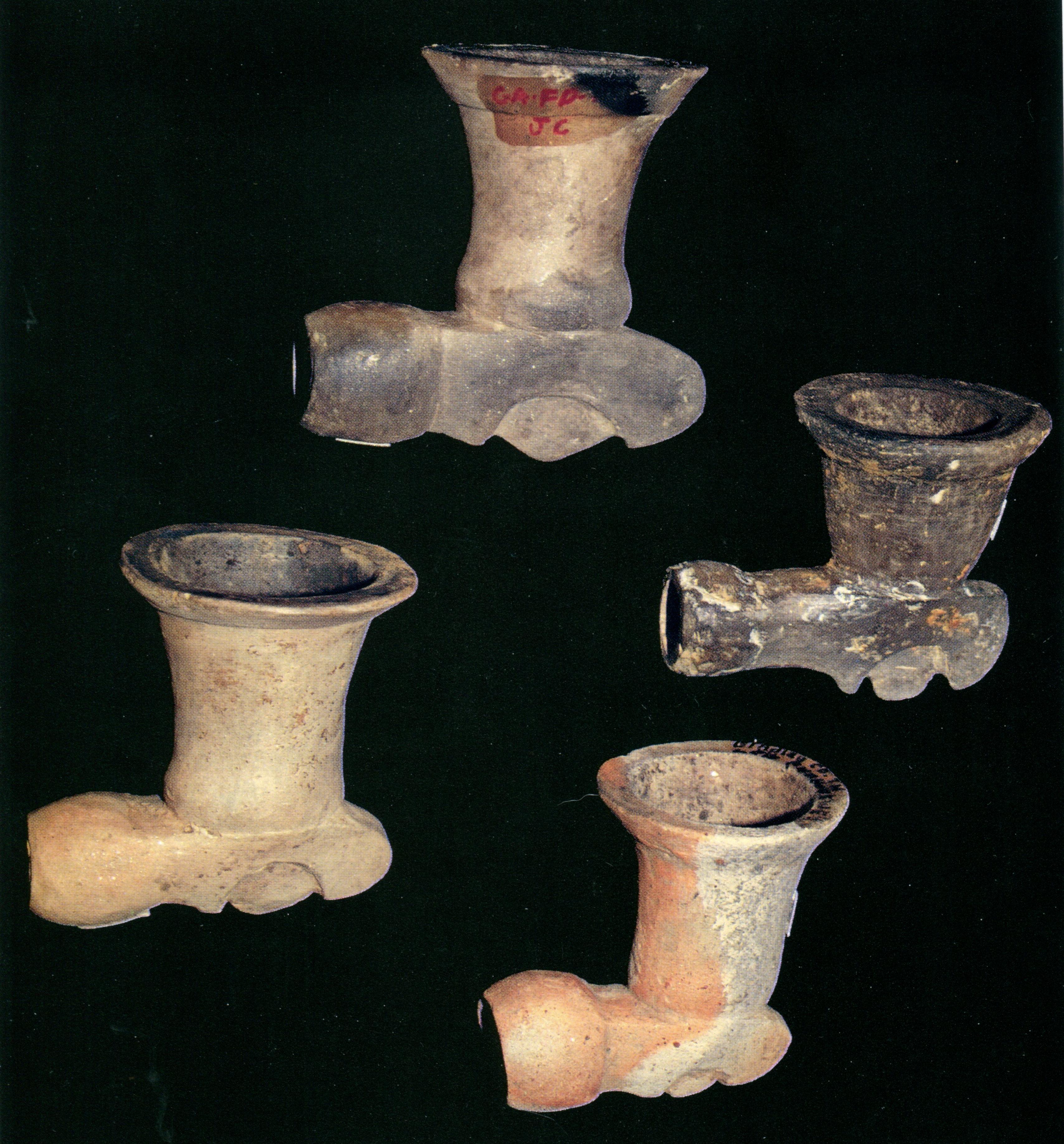
Most avid collectors of Indian artifacts across the Southeast are familiar with monolithic axes and probably with the pipes fashioned after them. The axe is a very rare artifact (there are 18 known recoveries) and, even though the pipe is a little more common, it is still a very special find. The collection of pipes in figure A are artifacts of the Dallas culture from the Late Mississippian period in eastern Tennessee. The largest of the pipes measures 2 inches wide and the smallest 1.5 inches. All show evidence of having been smoked with residue still in their bowls. The top pipe was found in Floyd County, Georgia. The other three were found on the same site in Bradley County, Tennessee. The pipes are part of the collection of Richard Lyles of Cleveland, Tennessee and were featured in the CSAJ, Vol.56. No.3, 2009. T.M.N. Lewis and Madeline Kneberg recovered one example of a monolithic axe from the Dallas component of the Hiwassee Island site in eastern Tennessee. The site also contained an elbow pipe made of claystone with an outline of a monolithic axe engraved in the bottom of the pipe. They also noted that monolithic axe pipes were common in Late Mississippian Dallas and Mouse Creek phase sites of both Hiwassee Island and the Chickamauga Basin. Lewis and Kneberg believed the pipe form was a Dallas invention that was passed on to the Mouse Creek phase and that it related to political rather than religious significance and was more likely to be used in council settings. C.B. Moore recovered three examples from burials at sites near Citico, Tennessee. Two burials contained monolithic pipes, which Moore mistook for bird beaks. The burials also contained shell gorgets and Dallas Incised pottery.